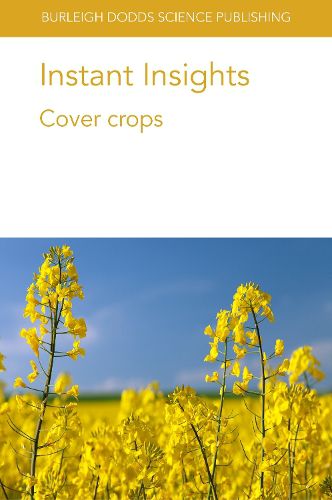Readings Newsletter
Become a Readings Member to make your shopping experience even easier.
Sign in or sign up for free!
You’re not far away from qualifying for FREE standard shipping within Australia
You’ve qualified for FREE standard shipping within Australia
The cart is loading…






This collection features four peer-reviewed literature reviews on cover crops in agriculture.
The first chapter describes the contribution of cover crops to improving soil health. The chapter reviews their key role e.g. supplying a food source for soil organisms, providing a source of carbon to help build soil organic matter, enhancing nutrient dynamics in the soil and improving soil structure.
The second chapter considers recent research on the benefits of cover crops in organic cultivation in areas such as soil structure and erosion control as well as nutrient cycling. It also looks at the wider role of cover crops in control of weeds, diseases and pests, promoting biodiversity and reducing greenhouse gases (GHGs).
The third chapter highlights the use of different cover crops species to promote live or dead soil mulch cover in Conservation Agriculture systems. It also reviews how cover crops effect aspects such as soil acidity and nutrient availability, soil physical and biological properties, soil nematode control, weed control and grain yield.
The final chapter reviews the role of cover crops in weed control. Cover crops are important additions to crop rotations because they suppress weeds during rotational periods when crops are absent and provide ecosystem services that enhance soil quality and fertility.
$9.00 standard shipping within Australia
FREE standard shipping within Australia for orders over $100.00
Express & International shipping calculated at checkout
This collection features four peer-reviewed literature reviews on cover crops in agriculture.
The first chapter describes the contribution of cover crops to improving soil health. The chapter reviews their key role e.g. supplying a food source for soil organisms, providing a source of carbon to help build soil organic matter, enhancing nutrient dynamics in the soil and improving soil structure.
The second chapter considers recent research on the benefits of cover crops in organic cultivation in areas such as soil structure and erosion control as well as nutrient cycling. It also looks at the wider role of cover crops in control of weeds, diseases and pests, promoting biodiversity and reducing greenhouse gases (GHGs).
The third chapter highlights the use of different cover crops species to promote live or dead soil mulch cover in Conservation Agriculture systems. It also reviews how cover crops effect aspects such as soil acidity and nutrient availability, soil physical and biological properties, soil nematode control, weed control and grain yield.
The final chapter reviews the role of cover crops in weed control. Cover crops are important additions to crop rotations because they suppress weeds during rotational periods when crops are absent and provide ecosystem services that enhance soil quality and fertility.